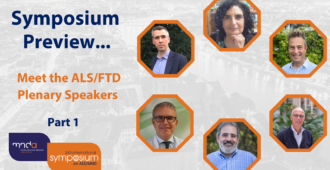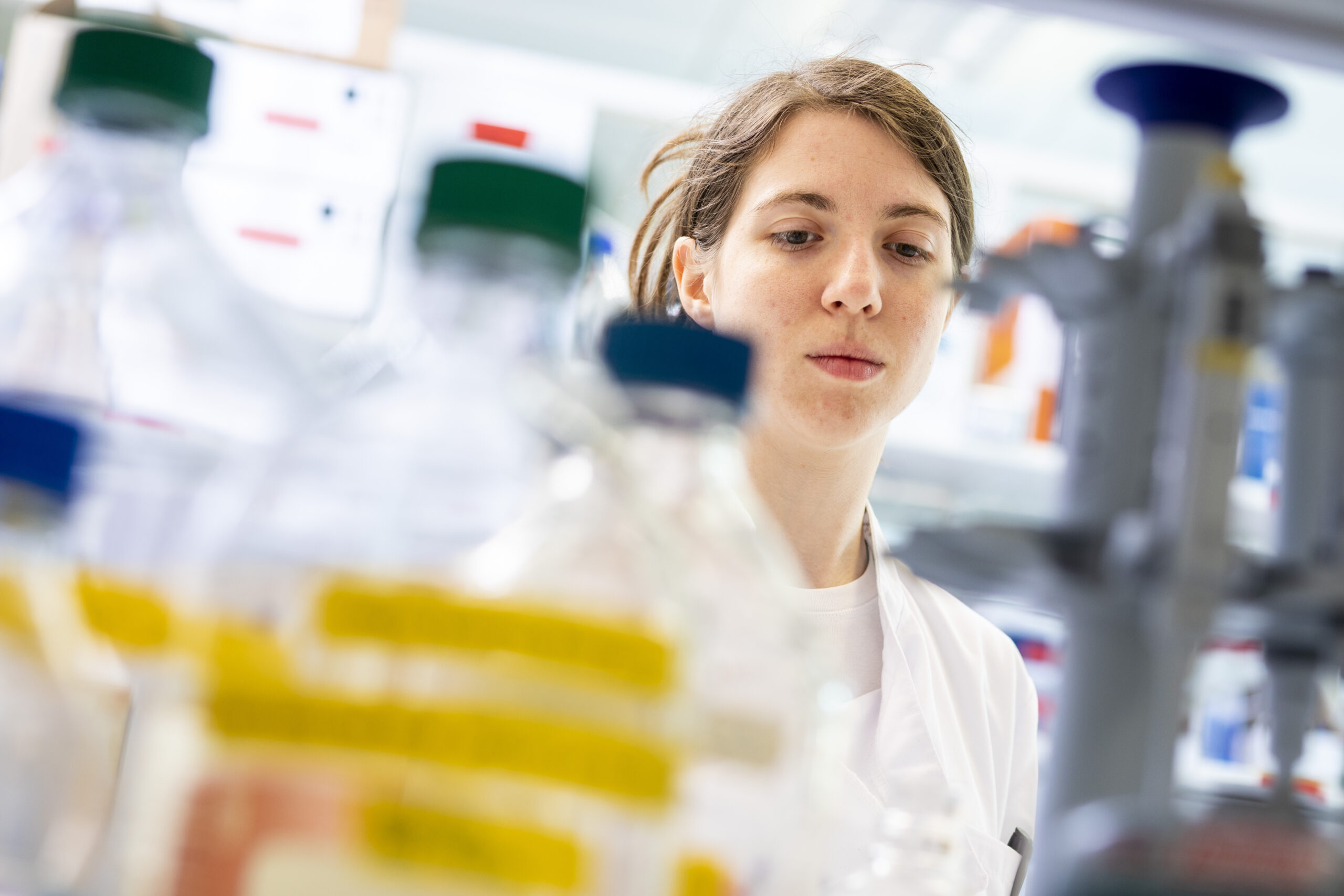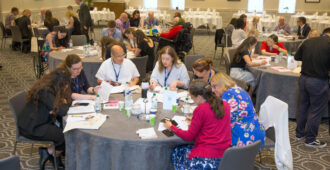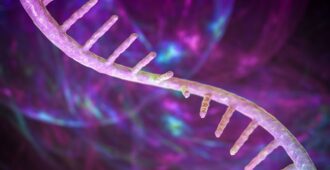A potential link between exercise and MND has long been a topic of conversation and debate. Several studies have been carried out, but the discovery of a link has not been conclusively shown. Some have shown an association, but it is important to note that association is very different from cause. Studies that use questionnaire-based data are subject to recall bias (how a person remembers the past) and different genetic backgrounds, variations in the definition of exercise and the relatively small numbers of people to study are just a few examples of factors that can make proving causation difficult. The question of whether exercise causes, or contributes towards MND is still very much unanswered.
A recent study by Julian and colleagues (2021) has attempted to provide answers using huge data sets of genetic information, bioinformatics and validated questionnaires for physical exercise in specific genotypes to shed more light on a potential association between exercise and MND, in a way that is claimed to remove much of the potential issues with bias reporting.
What was the study looking at?
The study aimed to firstly use a technique known as Mendelian randomisation to ask whether the observed association of MND with exercise is a coincidence or a contributing factor to the risk of developing the disease. They concluded that there was a causal relationship between exercise and MND but that this was only likely to be important for a subset of patients with a specific genetic background. Finally the researchers tried to identify what genes make up a vulnerable genetic background, for example by asking the question “Do people who already carry a gene known to increase the risk of MND, that participate in strenuous regular exercise, have a higher risk of developing MND?”
How did they do it?
The study defined physical exercise as frequent and intense, anaerobic burst activity often undertaken in leisure, training and competitive physical exercise activities. This type of exercise was selected for a number of reasons, including availability of data and because this type of exercise involves muscles/muscle fibres that are most affected in some people with MND.
The researchers used three main research methodologies: Mendelian randomisation, burden testing and a pilot case-control study.
Mendelian randomisation is used to compare huge data sets of genetic information (genome-wide association studies, or GWAS) that were originally collected to investigate different things. In this study two were used – one that looked at differences in the genetics of people who exercise and people who don’t, and one that compared the genetic differences between people with MND.
What is a GWAS?
A genome-wide association study is an approach that involves rapidly scanning markers across the complete sets of DNA, or genomes, of huge numbers of people (often hundreds of thousands) to find genetic variations associated with a particular disease. In MND, a GWAS would be looking for genetic changes that are more commonly found in people with MND than those who don’t have the disease.
A GWAS, from UK Biobank participants, was used to investigate the genetics of habitual exercise. The GWAS study identified gene changes in people that correlated with exercise (2-3 sessions of 15 minutes or more strenuous sport and other exercise per week) – that is, these people had genetic changes that people who did not exercise did not have.
The other GWAS data set used was from a European population which compared gene changes in Europeans with and without MND. This European dataset was chosen as most of the people in the UK Biobank dataset were also European meaning the two datasets have very similar genetic profiles.
Using these GWAS datasets, the researchers were able to determine a group of people with an exercise promoting genotype and a group with an exercise deterring genotype to see if any known MND risk genes were more common in one of these groups – is there a correlation? Are the same gene changes present in people with MND that are present in the group who exercised? This could suggest a causal relationship if a correlation between genetic changes that have an effect on outcome risk (MND) and genetic changes that have an effect on exposure risk (likelihood of exercise) is seen.
The next method used was burden testing. This method allowed the researchers to identify the very rare genetic changes in response to exercise that occur less frequently, capturing low frequency variations that we know are important in the genetic make up of MND. They grouped genes within pathways which either increased or decreased in expression after exercise. In this way they could examine changes in genes and pathways known to be associated with MND that occurred after exercise.
Thirty-six people took part in this experiment. Blood was taken before, and two minutes after, completing exercise. The levels of specific genes were then measured. These were compared to 1,000 control gene sets to make sure only genes in which changes in expression were seen in response to exercise were recorded.
The final method used was a pilot case-control study. This looked at the exercise history in people with C9orf72-MND (the most common form of inherited MND) and compared this group with people with other forms of MND and also a non-MND control group, using a questionnaire that was validated for use in MND through a previous MND Association-funded project. This would show if there is something different in people with C9orf72-MND that makes them more susceptible to MND, or have earlier symptoms, if they exercise.
What did they find?
The researchers conclude that, overall, the data suggest that the risk of MND is influenced by frequent and intense leisure-time physical activity. They also found that 52% of known MND-related genes are expressed differently following vigorous exercise.
It is well-known that carrying a mutation in a gene known to cause MND does not mean that a person will develop MND during their lifetime. The age of onset of disease can also vary between people who appear to have the same genetic background. This variability is known as ‘variable disease penetrance’ and we understand that environment and lifestyle must influence this.
The authors suggest that the variable disease penetrance in carriers of the C9orf72 mutation may be a result of differences in exercise history. They hypothesise that a person with the C9orf72 mutation is more likely to develop MND if they receive a certain ‘dose’ of exercise. Consistent with this theory is their finding that the age at which MND symptoms first occur in people with C9orf72-MND is earlier in those with a history of high daily physical activity than those with a history of low physical activity. This was not seen in people with other forms of MND. However, further work is needed in this area to determine if other genes and pathways discussed in this study might ultimately identify a genetic profile with an increased risk of MND following exercise.
What else can be gathered from this study?
As personalised medicine approaches become more widespread, it will become more important to understand gene-environment interactions which increase the risk of MND so that targeted therapies can be utilised.
The authors acknowledge that not all exercise is the same and that levels of intensity differ widely, and it was not possible to differentiate between specific activities for independent analysis. The authors did claim they could show that low-intensity, infrequent exercise would not be harmful, but that harm may occur from high-intensity, frequent leisure-time exercise.
Head trauma is also a consideration with sports such as rugby and American football. In this study, head trauma was not considered in the analysis even though exercise that involves a risk of head injury was included. The authors therefore suggest that head trauma is unlikely to influence these results.
The authors suggest that exercise may be one of the factors that influences symptom onset of MND and might explain the variation seen in people who all carry the C9orf72 expansion in their DNA. They even touch on the possibility that exercise in different forms or intensity may influence if a person develops MND or frontotemporal dementia (FTD) but, of course, more work is needed on this.
Going forward
If there really is a link between exercise and age of onset, and indeed increased risk of MND in people who already have a genetic predisposition to the disease, this opens the possibility of introducing lifestyle recommendations to those people. This may, in turn, assist in disease prevention.
However, it is still very clear that exercise has a huge health benefit to the majority of people and this study in no way suggests that exercise should be avoided. The benefits for most people far outweigh the risks.
Going forward, further understanding of which people are more at risk of developing MND through exercise is needed so that appropriate advice can be given. Potentially longitudinal studies of pre-symptomatic people with known genotypes, who complete accurate lifestyle diaries, would shed more light on this.







Having read the Blog with interest, I offer my own experiences that maybe of interest to some others.
Leaving school at 15yrs. I worked in the building industry doing heavy manual work and led a very active sporting life at the same time for the next 23 years. I was then diagnosed with MND and given 2/3 years to live. Fortunately progression has been slow which has enabled me to continue with my work until retirement and enjoy my sports to the present day.
Having been pricked and prodded by medical teams over the years and by omitting all pills and potions, I now pass on my own views to others when requested .
Sadly I feel that in reality we are still a long way off finding a complete cure but commend MNDA research teams around the world and for them to continue their excellent work. Eventually that is the only way a cure will be found.